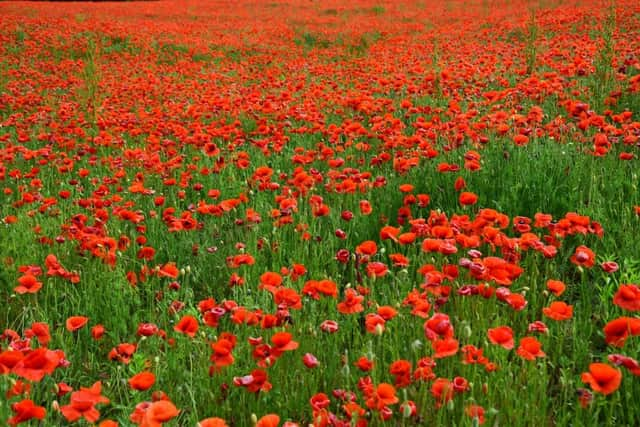Armistice Day 2020: what is the meaning of Remembrance Day, when is it this year, and what time is the two-minute silence?
and live on Freeview channel 276
Marking the end of the First World War, Armistice Day has been observed on the same day every year for more than a century.
Also known as Remembrance Day, it’s marked by millions of people all over the UK, and there are myriad traditions and ceremonies that take place in commemoration.
Advertisement
Hide AdAdvertisement
Hide AdBut what is Armistice Day, and why exactly do we observe it? Here’s everything you need to know.


When is Armistice Day?
Armistice Day takes place on 11 November each year, the day the agreement to end World War I was signed.
The 2020 commemorations will be held on Wednesday, 11 November.
What is Armistice Day?
The armistice was formally agreed between the Allies and Germany, and brought an end to four years of fighting on 11 November, 1918.
At 5.12am on that day, the armistice was signed.
Advertisement
Hide AdAdvertisement
Hide AdIt demanded that the Germans immediately withdraw from the territories they had captured, the disarmament of their military, and the release of all Allied prisoners.
The fighting then stopped at 11am - the eleventh hour, of the eleventh day, of the eleventh month.
While the signing of the armistice brought an end to the war, the Treaty of Versailles, signed seven months later, acted as the permanent peace treaty between the nations.
Why do we observe Armistice Day?
Armistice Day has been commemorated on 11 November since 1919, the first anniversary of the end of the war.
Advertisement
Hide AdAdvertisement
Hide AdIt’s since become known as Remembrance Day, representing a day of reflection and respect paid to the soldiers that died fighting in the conflict.
What is the two-minute silence?
During the first commemoration of Armistice Day in 1919, King George V requested that the country pause in silence for two minutes to remember the fatalities of the war.
The moment of silence became synonymous with Armistice Day thereafter, and was carried out on 11 November each year until the outbreak of World War II.
Now, it’s traditional for the two-minute silence to be held on Remembrance Sunday at 11am at war memorials, cenotaphs, religious services and even shopping centres around the country.
What is Remembrance Sunday?
Advertisement
Hide AdAdvertisement
Hide AdWhen the conflict of World War II began in 1939, it was decided Armistice Day would not be celebrated on 11 November.
Instead, the closest Sunday to the date became a “day of dedication” during the war.
After the fighting ended in 1945, the British Government sought to honour the soldiers who died fighting in both World Wars.
Armistice Day was officially replaced with the Sunday observance, which became known as Remembrance Sunday, and the date was fixed as the second Sunday of November in 1956.
Advertisement
Hide AdAdvertisement
Hide AdA National Service of Remembrance is held at The Cenotaph in London on that day every year, with members of the royal family and the government in attendance for the moment of reflection.
Why do we wear poppies?
In the run-up to both Remembrance Sunday and Armistice Day, many Brits wear poppies as a mark of respect to the millions of soldiers who died representing their country.
The poppies symbolise the flowers that grew over the French and Belgian battlefields after the end of World War I.
In 1921, the charity Royal British Legion began selling paper poppies to be worn on clothing as a mark of respect for Armistice Day.
Money raised by the annual Poppy Appeal is used to support the servicemen and women affected by conflict.